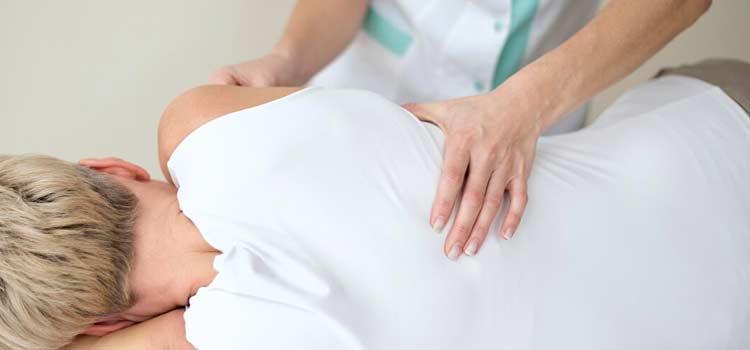
Osteopathy is a branch of medical practice that emphasizes treatment by massage, stretching and manipulation to create Muscularskeletal well-being and to rebalance the body's structure to enhance nerve function and blood flow. In this two year program, you will gain an understanding of key areas like the spine, hips, knees and ribs.
750 teaching hours are alotted per year (attendance in the theoretical-practical classes, study and interaction with the virtual campus, study of the research methodology, study of clinical practice, personal theoretical study).
Program Year 1 (Structural I): Methodological bases. Lumbar, thoracic, cervical, pelvic girdle, elbow, wrist, hand. Scientific investigation, Radiology and medical sciences program I.
Program Year 2 (Structural II): Cervicothoracic and thoracolumbar joints. Ribs. Hip. Knee. Ankle and foot. Integration of the osteopathic concept. Scientific investigation, radiology and medical sciences program II.
Admission Requirements
All applicants should provide proof of satisfactory completion of training in a discipline with a focus on human anatomy, physiology from a recognized institution. This can include, but not limited to, the following disciplines:
- Kinesiology
- Chiropractic
- Nursing
- Physiotherapy
- Fitness
- Massage Therapy
- Traditional Chinese Medicine
Proof of satisfactory completion of training consists of either an evaluation by a recognized degree-qualifying organization OR a full evaluation by CIOT staff of program and course outlines, work samples and including a copy of a transcript and degree/diploma. This evaluation may also be followed by an interview.
English Language Requirement:
Please note that all international students are required to submit acceptable English language tests that meet Canadian and international standards regardless of their previous education or language of instruction being conducted in English.
- CLBA 7
- TOEFL 71
- IELTS 6.0 with no band less than 5.0
Program Outline:
- YEAR 1 - 750 Hours
-
- Introduction to Osteopathy
- Lumbar spine
- Thoracic Spine
- Pelvic girdle
- Cervical Spine
- Scapular girdle
- Elbow, Wrist and Hand
- Exam
- YEAR 2 - 750 Hours
-
- Thoracolumbar junction, diaphragm
- hip and knee.
- Ribs. Cervico-Brachial Neuralgia, C5-C6
- Cervicothoracic junction and 1st rib. 6 days
- Ankle, foot
- Integration of the osteopathic concepts.
- Exam
- YEAR 3 - 950 Hours
-
- Disc prolapses and sciatica.
- Temporo-Mandibular Joint 1st part
- Introduction to Cranial Osteopathy. Sphenobasilar synchondrosis
- Temporal bone, Occipital and Parietal.
- Introduction to Visceral Osteopathy. Stomach, Duodenum
- Neurovegetative System.
- Exam
- YEAR 4 - 950 Hours
-
- Sacrum
- Structural/ Functional British Techniques.
- Myofascial release 1st part.
- Visceral Osteopathy: Biliar duct, Intestines, liver.
- Gynecology, prostate and coccyx.
- Cranial Osteopathy: Frontal, Ethmoid, nasal bone, Unguis
- Temporo-Mandibular joint 2nd part.
- Exam
- YEAR 5 - 950 Hours
-
- Craniocervical junction, Migraines
- Otorhinolaryngology and Ophthalmology.
- Heart, Lung, Kidney, Bladder and Lymphatics.
- Myofascial release 2nd part. Cranio Sacral Therapy and Whiplash.
- Pediatric Osteopathy I
- Pediatric Osteopathy II.
- Arterial Osteopathy.
- Exam
- Copy of Degree or Diploma in recognized field
- English test results
- Scan of Passport Front and Back
- Apply Online with Aplicar
Program Highlights
-
Licensing:
CIOT by PCC Branch -
Start Date:
January, May, September -
PGWP Eligibility:
None -
Academic Transfer Credits:
Not Applicable -
Credentials Of Program:
Diploma -
Length Of Program:
1500 Hours -
Tuition Fee
$7570.00(per academic year) -
Application Fee
$275 -
Textbooks
$ 500 -
Total Cost
$15,140
